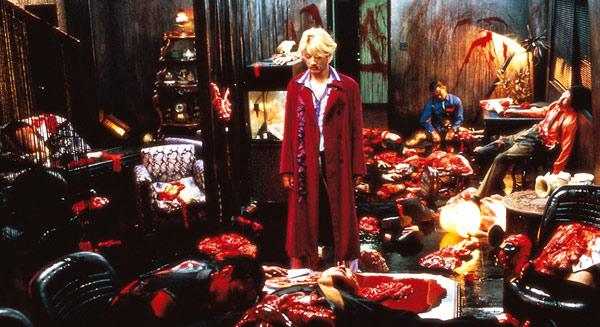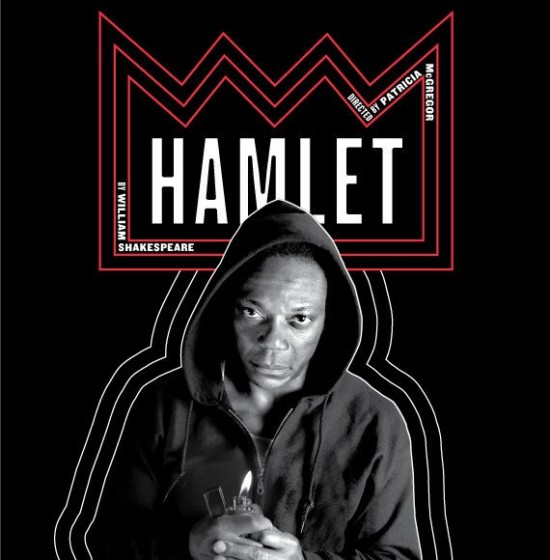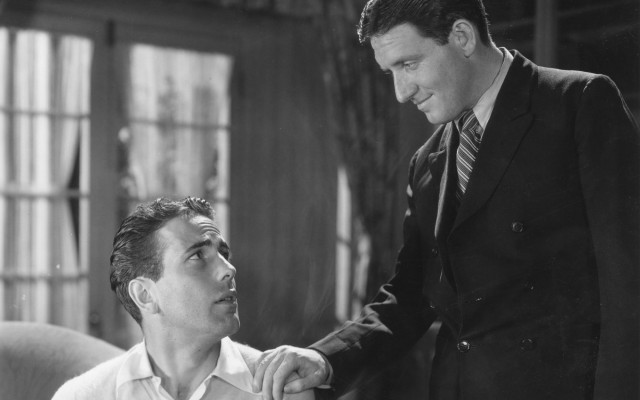INHERENT VICE (Paul Thomas Anderson, 2014)
Museum of the Moving Image
35th Ave. at 36th St., Astoria
Saturday, September 3, and Sunday, September 4, $15 (ticket purchase may be applied toward same-day admission to museum), 7:00
718-777-6800
www.inherentvicemovie.com
www.movingimage.us
 It makes sense that award-winning writer-director Paul Thomas Anderson, who has made such complex, challenging films as Magnolia, There Will Be Blood, and The Master, has made the first cinematic adaptation of a novel by reclusive, iconoclastic author Thomas Pynchon, who has written such complex, challenging books as Gravity’s Rainbow, V., and Vineland. It also makes sense that the book he chose to adapt is Inherent Vice, probably the most lighthearted and breezy of Pynchon’s tomes. But it also makes sense that the film itself is complex and challenging — and downright confusing. Walking out of the theater, we were pretty sure we liked what we had just seen, even if we didn’t completely understand what had happened. (As Jena Malone said of the making of the film, “The logic becomes the chaos and the chaos becomes the logic.”) The neonoir takes place in 1970 in the fictional Valley town of Gordita Beach (based on Manhattan Beach, where Pynchon lived for a long time). Joaquin Phoenix stars as Larry “Doc” Sportello, a mutton-chopped ex-hippie who is now a private gumshoe working out of a health clinic. One day his ex, Shasta Fay Hepworth (a transplendent Katherine Waterston), shows up to ask him to get her out of a jam involving her billionaire boyfriend, Mickey Wolfmann (Eric Roberts), who has gone missing, perhaps at the hands of Wolfmann’s high-society wife, Sloane (Serena Scott Thomas). Meanwhile, Doc is also hired by Hope Harlingen (Malone) to determine whether her supposedly dead husband, surf-sax legend Coy (Owen Wilson), is actually alive. As Pynchon himself says in the book trailer, “At that point, it gets sort of peculiar,” and peculiar it does indeed get, as Doc becomes immersed in a web of lies and deceit, dealing with a dangerous cult known as the Golden Fang (where Martin Short plays a sex-crazed dentist with a wild abandon), a curious health facility called the Chryskylodon Institute run by Dr. Threeply (Jefferson Mays), and Det. Bigfoot Bjornsen (Josh Brolin), a “renaissance cop” who has no time for any of Doc’s hippie crap, as the Manson murders hover over everything. Well, at least that’s what we think the plot is about.
It makes sense that award-winning writer-director Paul Thomas Anderson, who has made such complex, challenging films as Magnolia, There Will Be Blood, and The Master, has made the first cinematic adaptation of a novel by reclusive, iconoclastic author Thomas Pynchon, who has written such complex, challenging books as Gravity’s Rainbow, V., and Vineland. It also makes sense that the book he chose to adapt is Inherent Vice, probably the most lighthearted and breezy of Pynchon’s tomes. But it also makes sense that the film itself is complex and challenging — and downright confusing. Walking out of the theater, we were pretty sure we liked what we had just seen, even if we didn’t completely understand what had happened. (As Jena Malone said of the making of the film, “The logic becomes the chaos and the chaos becomes the logic.”) The neonoir takes place in 1970 in the fictional Valley town of Gordita Beach (based on Manhattan Beach, where Pynchon lived for a long time). Joaquin Phoenix stars as Larry “Doc” Sportello, a mutton-chopped ex-hippie who is now a private gumshoe working out of a health clinic. One day his ex, Shasta Fay Hepworth (a transplendent Katherine Waterston), shows up to ask him to get her out of a jam involving her billionaire boyfriend, Mickey Wolfmann (Eric Roberts), who has gone missing, perhaps at the hands of Wolfmann’s high-society wife, Sloane (Serena Scott Thomas). Meanwhile, Doc is also hired by Hope Harlingen (Malone) to determine whether her supposedly dead husband, surf-sax legend Coy (Owen Wilson), is actually alive. As Pynchon himself says in the book trailer, “At that point, it gets sort of peculiar,” and peculiar it does indeed get, as Doc becomes immersed in a web of lies and deceit, dealing with a dangerous cult known as the Golden Fang (where Martin Short plays a sex-crazed dentist with a wild abandon), a curious health facility called the Chryskylodon Institute run by Dr. Threeply (Jefferson Mays), and Det. Bigfoot Bjornsen (Josh Brolin), a “renaissance cop” who has no time for any of Doc’s hippie crap, as the Manson murders hover over everything. Well, at least that’s what we think the plot is about.
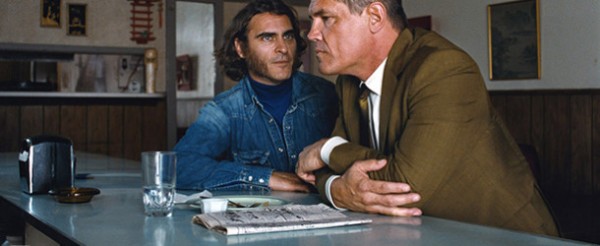
Doc (Joaquin Phoenix) and Bigfoot (Josh Brolin) don’t agree on much in Paul Thomas Anderson adaptation of Thomas Pynchon novel
As with all Anderson films, Inherent Vice looks and sounds great; cinematographer Robert Elswit, who has shot most of Anderson’s films, bathes the quirky drama in hazy, syrupy colors, while Jonny Greenwood’s score is accompanied by songs by Can, Sam Cooke, Minnie Riperton, the Marketts, and Neil Young. (In fact, Young’s Journey through the Past experimental film served as an influence on Anderson when making Inherent Vice, as did David Zucker, Jim Abrahams, and Jerry Zucker’s Police Squad and Naked Gun series, Robert Altman’s 1973 Philip Marlowe movie The Long Goodbye, and Howard Hawks’s 1946 version of Raymond Chandler’s The Big Sleep.) It all has the feel of the Coen brothers’ The Big Lebowski as reinterpreted by Anderson and Pynchon — who might have been on-set during at least some of the shooting and supposedly makes a cameo in the picture. The film is littered with absurdist jokes and oddities, from the way Bigfoot eats a chocolate-covered banana to a trio of FBI agents picking their noses, from the right-wing Vigilant California organization to a clip from the 1952 Cold War propaganda film Red Nightmare. Phoenix once again fully inhabits his character, who putt-putts around in an old Dodge Dart and just wants life to be mellow and groovy. Brolin is hysterical as his foil, the straitlaced, flattop cop who has a penchant for busting down doors. The large cast also includes Benicio del Toro as Sauncho Smilax, Doc’s too-cool lawyer; Reese Witherspoon as Penny Kimball, Doc’s well-coiffed girlfriend; Maya Rudolph (Anderson’s real-life partner and the daughter of Riperton) as receptionist Petunia Leeway; Sasha Pieterse as Japonica Fenway, who hangs with Golden Fang dentist Rudy Blatnoyd (Short); and Joanna Newsom as Sortilège, the film’s narrator (who does not appear in the book). Inherent Vice is yet another unique cinematic experience from Anderson, one that is likely to take multiple viewings to understand just what is going on, but as with his previous films, it is likely to be well worth the investment. Inherent Vice is screening September 3 & 4 at 7:00 in the Museum of the Moving Image series “See It Big! The 70mm Show,” which comes to a close this weekend with Kenneth Branagh’s Hamlet as well.
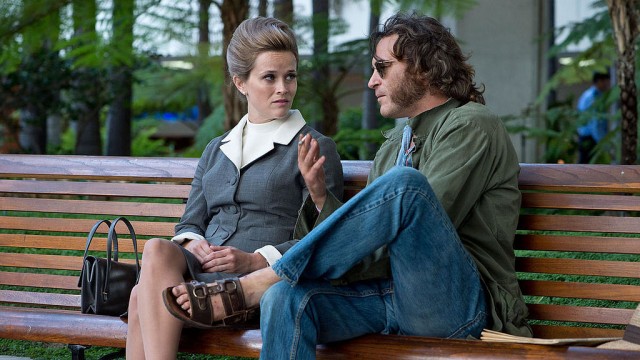
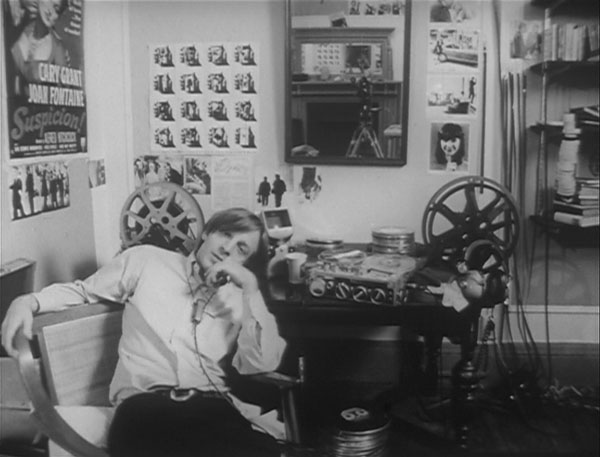
 New York City native Jim McBride’s directorial debut, the seminal David Holzman’s Diary, presages the YouTube Generation and reality shows in its depiction of a man obsessed with capturing virtually every moment of his life on camera. L. M. Kit Carson stars as David Holzman, a twenty-five-year-old unemployed schlemiel who goes everywhere with his 16mm camera, photographing the streets of his Upper West Side neighborhood, his model girlfriend, Penny (Eileen Dietz), and the woman in the apartment across the street. He also often turns the camera on himself as he discusses his life and moviemaking, directly and indirectly referencing Jean-Luc Godard, Alfred Hitchcock, Vincente Minnelli, Orson Welles, and Luchino Visconti. The black-and-white film is set up as if it’s a documentary, with choppy cuts and a barely audible soundtrack of a radio playing music and sharing the news of the day (July 1967). Holzman is happiest when he gets a new fish-eye lens and shows it off by carrying it through the streets above his head, offering a different perspective of the city. Like today’s world, McBride (The Big Easy, Great Balls of Fire!) brings up issues of voyeurism and privacy, because to Holzman, it’s as if nothing really exists unless it’s on film or television (or, now, the internet). Thus, it makes sense that David Holzman’s Diary is screening as part of the Anthology Film Archives series “Voyeurism, Surveillance, and Identity in the Cinema,” being held in conjunction with the International Center of Photography’s inaugural exhibition in its new downtown space on the Bowery, the multimedia
New York City native Jim McBride’s directorial debut, the seminal David Holzman’s Diary, presages the YouTube Generation and reality shows in its depiction of a man obsessed with capturing virtually every moment of his life on camera. L. M. Kit Carson stars as David Holzman, a twenty-five-year-old unemployed schlemiel who goes everywhere with his 16mm camera, photographing the streets of his Upper West Side neighborhood, his model girlfriend, Penny (Eileen Dietz), and the woman in the apartment across the street. He also often turns the camera on himself as he discusses his life and moviemaking, directly and indirectly referencing Jean-Luc Godard, Alfred Hitchcock, Vincente Minnelli, Orson Welles, and Luchino Visconti. The black-and-white film is set up as if it’s a documentary, with choppy cuts and a barely audible soundtrack of a radio playing music and sharing the news of the day (July 1967). Holzman is happiest when he gets a new fish-eye lens and shows it off by carrying it through the streets above his head, offering a different perspective of the city. Like today’s world, McBride (The Big Easy, Great Balls of Fire!) brings up issues of voyeurism and privacy, because to Holzman, it’s as if nothing really exists unless it’s on film or television (or, now, the internet). Thus, it makes sense that David Holzman’s Diary is screening as part of the Anthology Film Archives series “Voyeurism, Surveillance, and Identity in the Cinema,” being held in conjunction with the International Center of Photography’s inaugural exhibition in its new downtown space on the Bowery, the multimedia 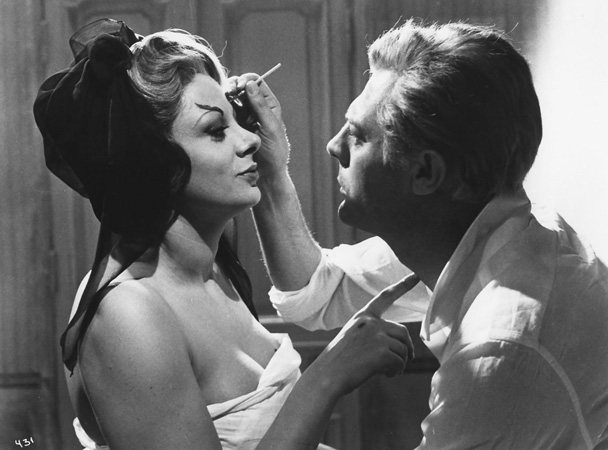
 “Your eminence, I am not happy,” Guido (Marcello Mastroianni) tells the cardinal (Tito Masini) halfway through Federico Fellini’s self-reflexive masterpiece 8½. “Why should you be happy?” the cardinal responds. “That is not your task in life. Who said we were put on this earth to be happy?” Well, film makes people happy, and it’s because of works such as 8½. Fellini’s Oscar-winning eighth-and-a-half movie is a sensational self-examination of film and fame, a hysterically funny, surreal story of a famous Italian auteur who finds his life and career in need of a major overhaul. Mastroianni is magnificent as Guido Anselmi, a man in a personal and professional crisis who has gone to a healing spa for some much-needed relaxation, but he doesn’t get any as he is continually harassed by producers, screenwriters, would-be actresses, and various other oddball hangers-on. He also has to deal both with his mistress, Carla (Sandra Milo), who is quite a handful, as well as his wife, Luisa (Anouk Aimée), who is losing patience with his lies. Trapped in a strange world of his own creation, Guido has dreams where he flies over claustrophobic traffic and makes out with his dead mother, and his next film involves a spaceship; it doesn’t take a psychiatrist to figure out the many inner demons that are haunting him. Marvelously shot by Gianni Di Venanzo in black-and-white, scored with a vast sense of humor by Nino Rota, and featuring some of the most amazing hats ever seen on film — costume designer Piero Gherardi won an Oscar for all the great dresses and chapeaux — 8½ is an endlessly fascinating and wildly entertaining exploration of the creative process and the bizarre world of filmmaking itself. And after seeing 8½, you’ll appreciate Woody Allen’s 1980 homage, Stardust Memories, a whole lot more. “Weekend Classics” continues September 9-11 with Fellini Satyricon before concluding September 23-25 with City of Women.
“Your eminence, I am not happy,” Guido (Marcello Mastroianni) tells the cardinal (Tito Masini) halfway through Federico Fellini’s self-reflexive masterpiece 8½. “Why should you be happy?” the cardinal responds. “That is not your task in life. Who said we were put on this earth to be happy?” Well, film makes people happy, and it’s because of works such as 8½. Fellini’s Oscar-winning eighth-and-a-half movie is a sensational self-examination of film and fame, a hysterically funny, surreal story of a famous Italian auteur who finds his life and career in need of a major overhaul. Mastroianni is magnificent as Guido Anselmi, a man in a personal and professional crisis who has gone to a healing spa for some much-needed relaxation, but he doesn’t get any as he is continually harassed by producers, screenwriters, would-be actresses, and various other oddball hangers-on. He also has to deal both with his mistress, Carla (Sandra Milo), who is quite a handful, as well as his wife, Luisa (Anouk Aimée), who is losing patience with his lies. Trapped in a strange world of his own creation, Guido has dreams where he flies over claustrophobic traffic and makes out with his dead mother, and his next film involves a spaceship; it doesn’t take a psychiatrist to figure out the many inner demons that are haunting him. Marvelously shot by Gianni Di Venanzo in black-and-white, scored with a vast sense of humor by Nino Rota, and featuring some of the most amazing hats ever seen on film — costume designer Piero Gherardi won an Oscar for all the great dresses and chapeaux — 8½ is an endlessly fascinating and wildly entertaining exploration of the creative process and the bizarre world of filmmaking itself. And after seeing 8½, you’ll appreciate Woody Allen’s 1980 homage, Stardust Memories, a whole lot more. “Weekend Classics” continues September 9-11 with Fellini Satyricon before concluding September 23-25 with City of Women.
 I remember the first time I saw the BBC series Ways of Seeing, thoroughly entranced by the host, a curly-haired British art critic with the cutest little lisp of his “R”s who promised that, while looking at European painting in a whole new way, “we shall discover something about ourselves and the situation in which we are living.” Years later, I was distraught when I couldn’t find my paperback copy of the companion book; my wife quickly ordered it and it was soon in my hands, where I devoured every word and image again and again. So I was terrifically excited when I heard about the new documentary The Seasons in Quincy: Four Portraits of John Berger, which opens August 31 at Film Forum. Perhaps my expectations were too high, but I came away from the four-part film feeling disappointed and let down; I selfishly wanted only Berger (pronounced with a soft “g”) but instead got too much of his friends and colleagues. And to make matters worse, the directors are too often what Berger tried so hard to avoid being throughout his long, influential career: pretentious. The film begins in winter with “Ways of Listening,” in which director Colin MacCabe focuses on Berger and his longtime friend, Oscar-nominated actress Tilda Swinton, as they talk at Berger’s farm in the small French town of Quincy, where he moved in the 1970s after becoming fed up with England. Filmed in 2010, the segment works best when Berger tells personal stories about his father and war; Swinton listens while peeling apples, the camera on her as much as on him. It occasionally feels as if she can’t decide whether to share Berger or keep him to herself; they already have a special connection, sharing the same birthday, albeit thirty-four years apart. But I wanted to make my own connection with Berger, a down-to-earth intellectual with a lust for life and a wide-ranging legacy, an artist, critic, “radical humanist,” social commentator, political activist, husband, father, farmer, and self-described “revolutionary writer” who prefers to simply be known as a storyteller.
I remember the first time I saw the BBC series Ways of Seeing, thoroughly entranced by the host, a curly-haired British art critic with the cutest little lisp of his “R”s who promised that, while looking at European painting in a whole new way, “we shall discover something about ourselves and the situation in which we are living.” Years later, I was distraught when I couldn’t find my paperback copy of the companion book; my wife quickly ordered it and it was soon in my hands, where I devoured every word and image again and again. So I was terrifically excited when I heard about the new documentary The Seasons in Quincy: Four Portraits of John Berger, which opens August 31 at Film Forum. Perhaps my expectations were too high, but I came away from the four-part film feeling disappointed and let down; I selfishly wanted only Berger (pronounced with a soft “g”) but instead got too much of his friends and colleagues. And to make matters worse, the directors are too often what Berger tried so hard to avoid being throughout his long, influential career: pretentious. The film begins in winter with “Ways of Listening,” in which director Colin MacCabe focuses on Berger and his longtime friend, Oscar-nominated actress Tilda Swinton, as they talk at Berger’s farm in the small French town of Quincy, where he moved in the 1970s after becoming fed up with England. Filmed in 2010, the segment works best when Berger tells personal stories about his father and war; Swinton listens while peeling apples, the camera on her as much as on him. It occasionally feels as if she can’t decide whether to share Berger or keep him to herself; they already have a special connection, sharing the same birthday, albeit thirty-four years apart. But I wanted to make my own connection with Berger, a down-to-earth intellectual with a lust for life and a wide-ranging legacy, an artist, critic, “radical humanist,” social commentator, political activist, husband, father, farmer, and self-described “revolutionary writer” who prefers to simply be known as a storyteller.
